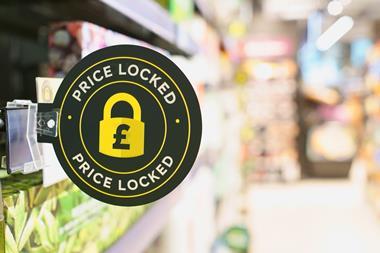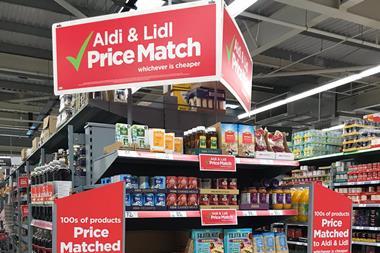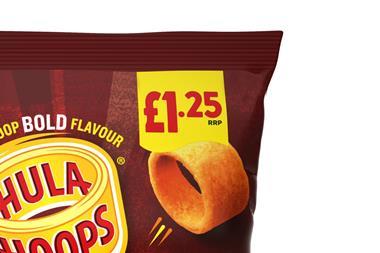PepsiCo recently launched price-marked packs of Walkers Crisps - and it’s not the only one looking to gain from the dopamine rush
Next time you watch a shopper look at a price-marked pack, think about the effect it’s having on their brain.
It’s no ordinary reaction. When a punter sees that price flash on an appealing product, says shopper behaviour expert Phillip Adcock, it causes dopamine - a chemical that governs responses to rewards - to be released into the brain, and emotion takes over. The response is even more likely to favour impulse snacking products as shoppers are less able to suppress emotional decisions when hungry, he adds.
All this medical talk may have been news to you, but the trade is alive to the opportunity.
The rows of standard bags of Walkers crisps now sporting a bold 49p flash are the highest-profile sign of the growing use of price-marking by some of Britain’s biggest brands.
According to PepsiCo, 44% of shoppers are more likely to make an impulse purchase when an item is price-marked, says wholesale director Kieran South. And research from Him! shows 98% of shoppers want PMPs, but only 78% of retailers stock them.
“Price-marked packs work on a number of different psychological levels,” says Adcock, of shopper behaviour researchers SBXL. “A larger-than-normal image of a price prompts customers to think it must be good if brands are willing to advertise it,” he says.
This also reduces the need for shoppers to compare it with other products, he adds, as it reassures them the product will be the same price everywhere.
Kettle Crisps, which this week announced it was launching price-marked packs, said PMPs gave brands - even premium ones - an opportunity to highlight the value they offered.
It’s a view echoed by Haribo, which launched PMPs in 2010 and says they play a key role in its promotional activity. They have proved popular with independent retailers.
“They are self-executing and need no PoS to reinforce or communicate,” says Haribo MD Herwig Vennekens, adding that their use was not confined to the impulse channel. “For the grocery market they work particularly well during seasonal periods to promote new lines.”
PMPs have come in for criticism for forcing retailers to sell at a lower margin than they would prefer, but Vennekens insists retailers are always given a choice.
“We offer price-marked and non price-marked packs, which give the retailer the opportunity to retail an item at a price suitable for them.”
Price-marking has also been making inroads into ice cream - and not only on impulse products. Mars Ice Cream, for example, has redesigned its take-home four-packs this year and added a price-marked flash, arguing that “one in three consumers are more likely to purchase price-marked packs”.
But price-marking isn’t for everyone - as Piper’s Crisps demonstrated this week when it issued a press release in response to Walkers’ PMPs, pledging it would never price-mark.
“Retailers are in the best position to determine the price of the goods they sell,” said brand owner Alex Albone. “Balancing prices and margin to give the best return is the art of retailing and we wouldn’t want to narrow the options.”















No comments yet